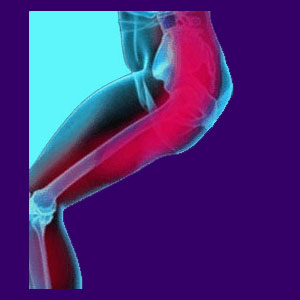
Lower back and knee pain is a particularly brutal combination of symptoms which often affects many dorsopathy sufferers, causing chronic agony and extremely limited physical functionality. Both lower back pain and knee pain can be sourced from structural issues in the skeleton or soft tissues, but both are also very typical sites for ischemic pain related to a mindbody causation.
Knee problems may develop because of a back issue, as the patient is conditioned to ambulate incorrectly to avoid pain. Lower back symptoms can also occur due to a knee concern, for similar reasons. Of course, research stats demonstrate the low back and knees as being 2 of the most common sites for psychogenic pain to occur, adding another consideration to the diagnostic mix.
This narrative provides an interesting and objective look at this horrific combination pain syndrome in the knees and lumbar region.
Lower Back and Knee Pain Relationship
There are many possible reasons why lumbar symptoms can be related to pain in the knees. If a spinal issue causes the patient to favor one side, or move in an unusual manner, the knee may suffer stress leading to painful symptoms. Likewise, if the knee has an injury or degenerative condition which causes the patient to hold all their weight on one side, the spine may suffer some pain, as well.
These are the normal working theories used to explain combination pain in both locations, according to the Cartesian medical model. These have also been the ideas of pain championed by many physical therapists and chiropractors over the years. In some scenarios, these theories are correct, but in many cases, they completely miss the point. This has been supported by the widespread propagation of the idea that most structural findings on MRI, in the knee or back, do not correlate to the incidence, location or severity of pain.
Lower Back and Knee Facts
The sciatic nerve is responsible for providing neurological signals to much of the lower anatomy, including the knee. The nerve roots which compose the sciatic are sourced in the lumbar spinal region. Therefore, there can certainly be a spinal relationship which causes pain in the back and sciatica symptoms in the legs, including the knee. This is also a very common diagnostic theory and is sometimes accurate. I suffer from this combination myself (as well as a twice torn right meniscus and a completely destroyed spinal anatomy).
However, ischemia is known to attack the soft tissues and nerves in the back as one of its favorite targets. Ischemia can cause widespread and severe back pain and the effect on the sciatic nerve and its peripheral branches can cause chronic knee pain, as well. Dr. Sarno speaks of this combination of symptoms existing in many patients, either in successive bouts or even concurrently with one another.
Lower Back and Knee Pain Analysis
If there is no obvious injury or functionality concern causing the pain, then something else must be responsible. In most cases, spinal MRI will turn up some structural condition in the lumbosacral region to blame the pain upon. This is simply due to the universality of arthritis and disc desiccation in the region and the virtual universality of herniated discs. In the majority of cases, this diagnostic therapy turns out to be unenlightened and downright incorrect. The abysmal curative results offered by most back pain treatments and many knee surgeries support this fact 100%.
I routinely advise all patients to take an active role in their care and research their diagnosis thoroughly, especially before even thinking about any drastic or surgical therapy. The more you learn, the more you may just realize that the condition(s) blamed for your symptoms often make little or no sense, which also explains why all those treatments never cured you.
It is no wonder that more and more doctors, like Mitchel Yass, are now wholly getting behind the idea that structural irregularities should never be taken for granted as the source of pain without definitive evidence of such.
Back Pain > Combination Back Pain > Lower Back and Knee Pain





